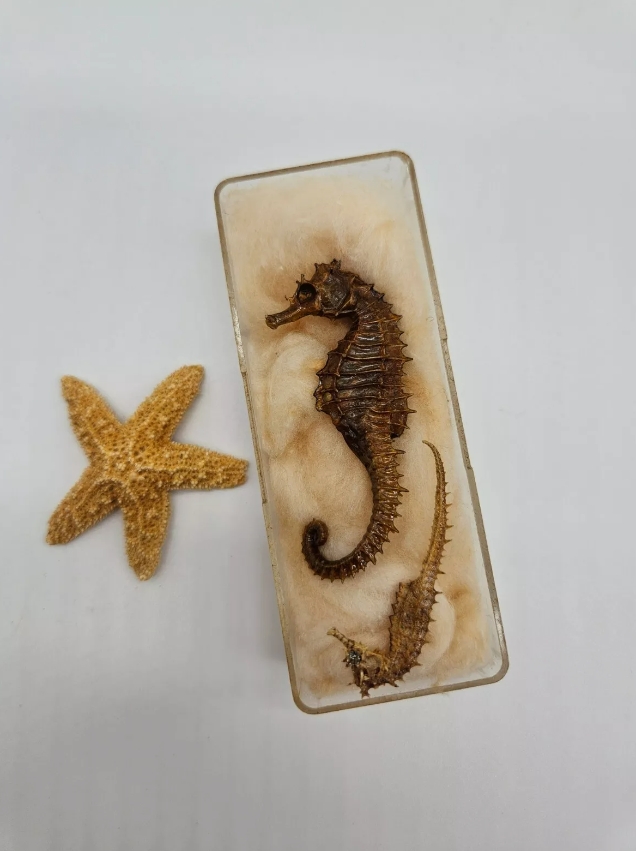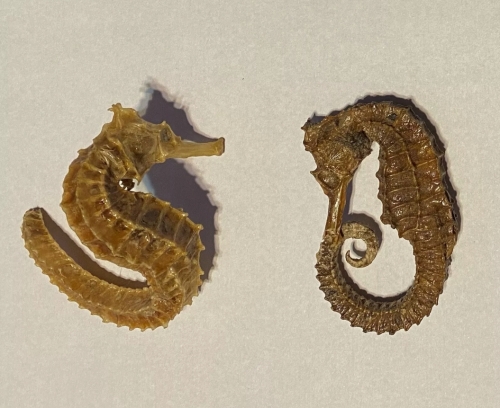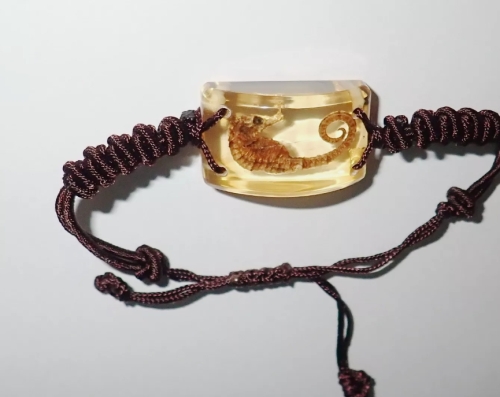The seahorse is a unique and fascinating Marine creature known for its peculiar morphology and complex reproductive behavior. Its specimens often become the focus of Marine biology research and collectors.
The morphological characteristics of the seahorse are very unique, usually showing a curved body, the head is at a right Angle to the body, shaped like a horse's head, so the name "seahorse". Their bodies are covered with a delicate layer of bony scales that give them a beautiful and hard appearance. The seahorse's tail is very flexible and can grasp seaweed or other substrates, allowing it to remain stable in the water.
Seahorses come in a variety of colors, including yellow, orange, green, and blue, depending on the environment and species they inhabit. These colors not only make seahorses more attractive to divers, but also make it easier for them to camouflage in the ocean and avoid predators. Seahorses typically live in coral reefs, seagrass beds, or other environments rich in hiding places, and rely on camouflage and a stationary habit to reduce the threat of predators.
The reproductive behavior of seahorses is very unique, male seahorses will become pregnant and give birth, which is a very rare phenomenon in the animal kingdom. Male seahorses have a special pouch on their abdomen, and the female seahorse places the eggs into the pouch of the male, who is responsible for fertilization and embryo development. The gestation period usually lasts several weeks, and at the end, the male seahorse will give birth through intense contractions, releasing the baby seahorse, which is full of wonderful life.
Because of its unique shape and behavior, the seahorse has been endowed with special symbolic significance in many cultures, often associated with love, resilience and calm. However, many seahorse species are in decline due to habitat destruction and fishing practices. Therefore, it is particularly important to protect seahorses and their habitats.
















